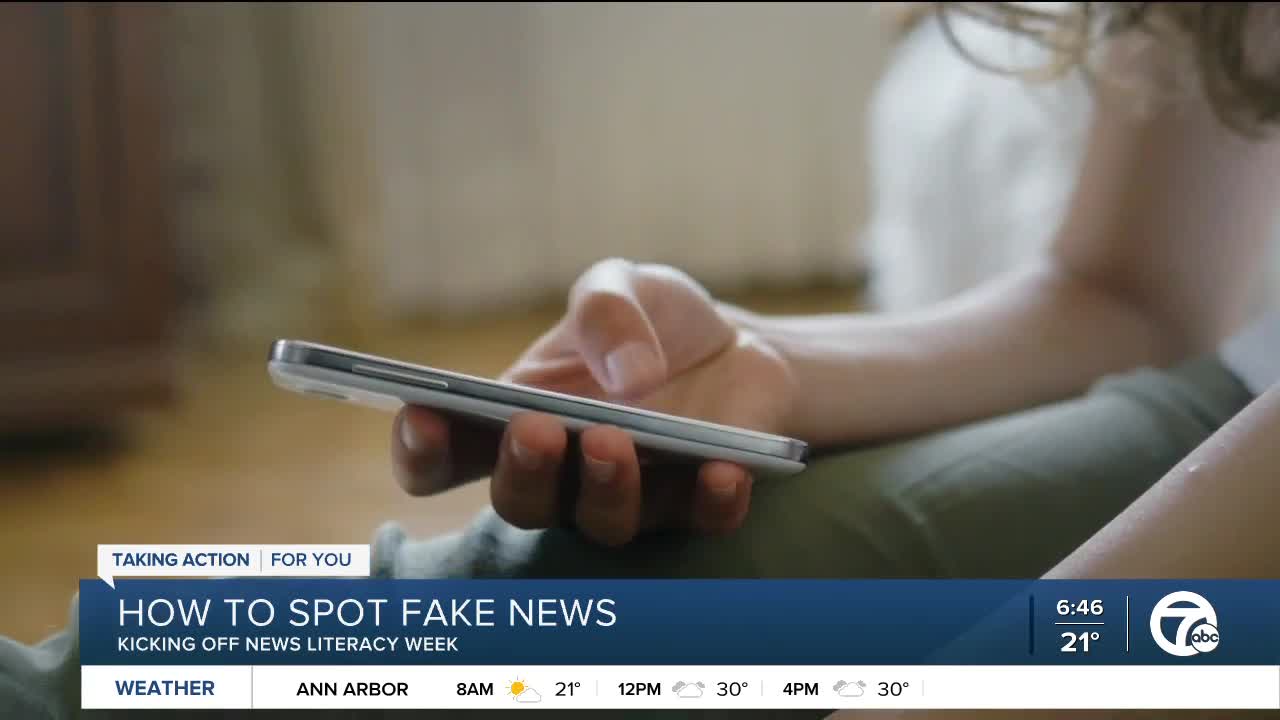Spanish Schools Will Teach Teens How to Spot Fake News
 ]
]
MADRID’S Regional Ministry for Education has launched a school programme to teach the capital’s teens how to spot fake news as Spanish language disinformation continues to grow.
– Advertisement –
Fake news has become a global problem for tech companies, lawmakers, and the public. In the wild west of the world wide web, unscrupulous fraudsters have carved careers in deceiving and misleading the public – and the pandemic proved to be a gold rush for disinformation merchants.
According to research by Spain’s Panda Security company, 52 per cent of Spaniards were exposed to disinformation online during the lockdown. Over half were aged between 18 and 34 years old, and most fake news came in the form of social media content including articles, audio, videos, and photographs.
To combat the dangerous spread of disinformation, Madrid’s regional ministry for education has devised a classroom module to equip the city’s teenagers with the skills “essential to be able to discern what is false in the constant flow of information in which we are immersed.”
Students will be taught “what disinformation is, its various forms and consequences” as well as giving them the “processes and tools to verify information, photographs, videos, and social network accounts” to assess whether what they are reading is true or false.
Spanish language fake news content is spreading like wildfire across the net, with many agencies suspecting that disinformation campaigns are funded by foreign actors to disrupt the mainstream narrative and sow confusion into society. The public has been urged by the Guardia Civil and other groups to educate themselves on how to spot disinformation. In the cases of vaccine and Covid related fake news, the consequences of being misled could be fatal.
Thank you for taking the time to read this news article “Spanish Schools Will Teach Teens How to Spot Fake News”. For more UK daily news, Spanish daily news, and Global news stories, visit the Euro Weekly News home page.
Teaching children how to spot fake news
 ]
]
Teaching children how to recognise whether a particular news is real or false was the theme of a recent online conference organised by Mater Boni Consilii St Joseph School Paola and Finnish NGO Faktabaari. Over 150 participants, including educators, university and MCAST lecturers, journalists and student journalists, attended the conference.
Mikko Salo and Kari Kivinen from the NGO Faktabaari discussed with the participants practical ways and exercises that can be used with children and adults alike on how to analyse whether a news report is real or fake. They also spoke about measures being taken at European level and how media literacy is being implemented in all the Finnish schools through the new national minimum curriculum. Salo and Kivinen also discussed the work of the NGO Faktabaari.
Minister for European and Foreign Affairs Evarist Bartolo underlined the importance of educating students to take a critical approach to what is presented to them, to reflect and then take positive actions. He also emphasised the importance of finding ways to live together harmoniously with all the diversities of culture and religion.
Carmelo Abela, Minister in the Office of the Prime Minister, stressed the need to check the sources of the information we receive. He also mentioned that Malta was currently working on policies with regarding media literacy.
Ambassador of Finland to Malta Pia Rantala Engberg spoke about taking a whole society approach in dealing with misinformation and teaching young and old alike to be critical. She also discussed the use of hybrid resources and how this approach is being implemented in Finland.
The conference was introduced, hosted and closed by Dr Kenneth Vella, ambassador designate to Finland and Estonia, and head of school.
The best ways to spot fake news on social media & help stop the spread of it
 ]
]
The Telegraph
New Zealand’s first case of coronavirus in the community for more than two months has been identified as the South African variant and was likely contracted in hotel quarantine, health minister Chris Hipkins said on Monday. The 56-year-old woman, who recently returned from Europe, tested positive on Saturday, 10 days after she completed her compulsory two weeks in isolation. Boris Johnson is under increasing pressure from ministers to toughen border controls to prevent new variants of coronavirus from reaching the UK. And Health Minister Matt Hancock and Priti Patel, the Home Secretary, are currently pushing for all arrivals to the UK to be quarantined in hotels. New Zealand has been widely praised for its handling of the pandemic, with just 25 deaths from 1,927 confirmed virus cases in a population of five million. The latest case is New Zealand’s first in the community since mid-November and has been classified as a strain said to be more transmissible. “The strain of infection is the South African variant and the source of infection is highly likely to be a fellow returnee,” said Mr Hipkins. The woman is thought to have been infected during quarantine by a person on the same floor of the hotel who tested positive two days before the woman left. The 56-year-old travelled around the Northland region near Auckland after her release from quarantine and showed symptoms for several days before being tested. Two people close to her, including her husband, have since returned negative tests and New Zealand’s director-general of health Ashley Bloomfield said they likely avoided contracting the illness due to the type of infection. “She didn’t talk about respiratory symptoms, it was more muscle aches, so she may not have been sharing or spreading the virus much,” he said. “I don’t think that’s peculiar to this variant, it’s just how it was expressed in this woman.” The World Health Organisation has said there is no clear evidence the South African variant leads to more severe disease or a higher death rate.